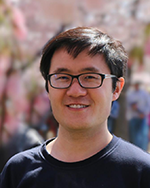Understanding the principles of human brain development is critical for revealing the formation of brain functions, human-unique features, and the causes of brain diseases (see our review: Nature Reviews Genetics 2024). The hippocampus, the “memory center” of the adult mammalian brain, can continuously generate new immature neurons from neural stem cells throughout the lifetime, a phenomenon known as adult neurogenesis. It plays crucial roles in regulating plasticity, memory, emotion, cognition, and other important brain functions, whereas its abnormalities have been linked to various human brain disorders, such as epilepsy and Alzheimer's disease. Understanding the mechanisms regulating adult neural stem cells and newly born immature neurons can not only elucidate principles of brain development and disease but also provide new insights for regenerative medicine for brain disorders and trauma. However, little is known about the characteristics and regulation of hippocampal neurogenesis in the human brain, and understanding of its regulatory mechanisms in the adult mammalian brain is incomplete.
Our research group uses hippocampal neurogenesis as a biological system and employs cutting-edge technology platforms, such as single-cell multi-omic sequencing, transgenic animal models, human brain cell and slice culture models, and time-lapse confocal imaging, in combination with computational biology tools such as machine learning and deep learning, to reveal mechanisms underlying brain development and disorders. Our previous work using mouse models focused on regulatory mechanisms underlying multiple key steps during adult hippocampal neurogenesis, including adult neural stem cell quiescence and maintenance of stem cell pool (Cell Stem Cell 2018), neural stem cell differentiation and fate choice (Nature Neuroscience 2015), and migration of newborn immature neurons (PNAS 2015). Our recent research revealed the multi-modal characteristics and regulation of this process in the human brain. We mapped the molecular landscapes of multiple important human brain cell types at the single-cell level, including hippocampal immature neurons, across the lifespan and in Alzheimer's disease. We also used brain slice culture models to demonstrate the capacity for the hippocampus to generate new neurons in adult humans (Nature 2022; Cell Stem Cell 2022).
We aim to uncover the molecular and cellular mechanisms modulating hippocampal neurogenesis and how they vary across species, ages, and diseases. By integrating and expanding our technology platforms, we plan to investigate the molecular diversity, intrinsic and extrinsic signaling, and developmental tempo of key cell types involved in neurogenesis, including neural stem cells and newborn immature neurons, and how diseases can lead to their dysregulation. Ultimately, we hope to reveal the molecular and cellular basis of neural development and regeneration and provide new insights that can inform treatment strategies for brain disorders and injuries.
Our research group welcomes outstanding doctoral, master's, undergraduate students, research assistants, and postdocs to join our team.

Investigator and Lab Head